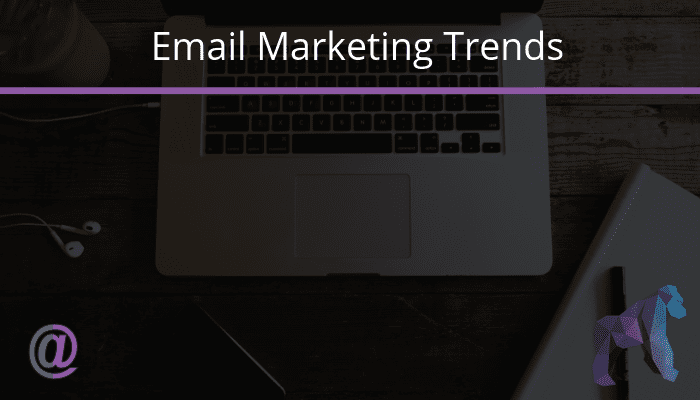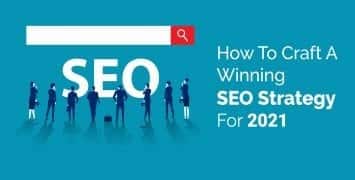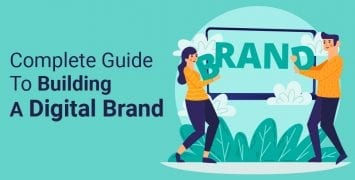A funny thing happens today when you talk about email. People, specifically younger ones, may begin staring blankly, as though email is a relic of the past. Maybe it’s because, in some peoples’ minds, social media has become the end-all for communicating, although in reality, it’s still a highly useful tool and perhaps the smoothest and most efficient method for communicating that we have.
Email is just as alive and well as ever before, and if you want to know the full story, it’s even getting stronger and more widely used than ever before, according to statistics.
Don’t fall for the Zuckerbergian myth that electronic mail correspondence is dead. In fact, you’ll want to stay on top of what the latest email trends are if you’re using it for marketing, because like any other year in the age of technology, 2018 is a new frontier. Yee-haw.
Most marketing professionals know that a well-run email marketing campaign is a vital outreach tool. What many may not realize is how critical it is to keep up with the trends from year to year, since email marketing standards can shift before you can say “new iPhone release.”
What roped in high conversion rates and generated additional sales one year can contribute toward a decrease in the same analytics the next if you don’t stay on top of howpeople are using email. That’s why we created this guide to help identify the top email marketing trends in 2018 and separate the future of email marketing from techniques that it might be time to leave behind.
1. Personalized, highly targeted email automation is a trend not to ignore
Currently, 95 percent of email volume for marketing is sent out in the form of mass emails, while only five percent of emails are automated. The case for switching those numbers around grows strong as customers demand high levels of personalization and targeting.
Companies that use automated technology to speak to customers within an email directly are on the cutting edge of what looks to be the way things are headed overall. Automated options, like AI, help emails sound more human and personal through the use of targeted data.
Companies like Netflix and Spotify are already using automation to optimize emails toward customers, including features like recommendations based on data about previous tastes and interests. This a prescient marketing trend that more brands will integrate into their email tactics in 2018 and beyond, and automation will likely someday wholly take the reigns.
2. Interactive emails capture attention
The customer lifecycle has a fluidity that shifts over time. The marketing funnel changes accordingly to get consumers to that universal goal of purchase, loyalty and returning. Today’s audiences are more challenging in many ways, although technology is making it easier to meet rapidly shifting demands.
Perhaps it’s because people’s collective attention spans are shrinking, or maybe it’s because everyone has become so accustomed to social media that they desire to interact with their online environment as much as possible, but whatever the reason, people want to interact with their emails. Giving people something specific to do with an email leads the pack across the board of email marketing tactics, according to one study from Litmus.
What does interactive mean in the context of an email?
Basically, anything that a recipient can, well, interact with: drop-down menu selections, quizzes, surveys, photo galleries, and product samplings are highly effective and engaging when it comes to getting people to open marketing emails. 2018 promises to add increased demand for that engagement to keep people’s attention span as they move toward product and brand commitment.
3. Plain text outperforms heavy-handed HTML for readability and mobile optimization
Sure, we just got finished talking about how interactive emails are practically a requirement these days, but that doesn’t detract from the first thing people will notice when they open an email: the presentation.
While HTML still has an important role to play (see the above section), being greeted by a simple body of text has a greater impact than an advertisement graphic. Studies by Litmus show that plain text emails get better results in several ways, including higher open rates and fewer instances of getting caught up in spam filters. Plain text suggests that someone took the time to write out a message rather than hastily throwing together a graphic with a bunch of promotions embedded in it.
Plus, plain text will always load, especially on mobile phones where HTML still struggles to find a home sometimes.
4. Sticky content/storytelling is key
Opening an email full of substantial content is essential to consumers. Storytelling tactics add layers of engagement and create connections to the email’s subject, provided the content itself is well-written and engaging.
Conversational ways of talking to customers only add to the aforementioned personalized content trend, and people are more willing to pay attention to email marketing content that speaks to their values. It’s time to leave in-your-face promotions and salesy approaches behind in 2018, because behind every great business offer there’s a story waiting to be told.
This strategy also creates sticky content that keeps people in the loop for the long haul. The more connected to the content consumers feel, the more likely they are to stick around and not opt out. Retention of email subscribers is all about how you’re reaching out to people.
5. Segmentation is the ticket to better marketing email personalization
Email segmentation helps create more precise targeting by dissecting email lists into smaller groupings, which makes it easier to employ automation, personalized storytelling, and in turn generate more loyalty or business.
A study by MailChimp found that segmented email campaigns have higher levels of open rates, click-throughs, as well as lower rates of unsubscribing.
How an email list is segmented also makes a difference. A study by Lyris, Inc. showed that segmenting by factors like demographics, location, occupation, and levels of activity and engagement are all conducive to strengthening retention rates as well as increasing people’s use of sales and services in the end.
Power into the future of email marketing
Email is a time-tested standby for electronic communication, and the marketing trends speak for themselves. In 2018 and beyond, email is only going to get stronger. Stay on top of what’s ahead, and your business will reap the benefits.




